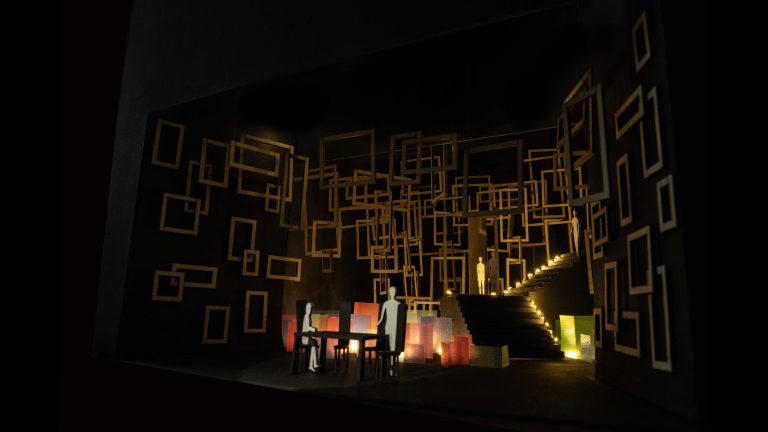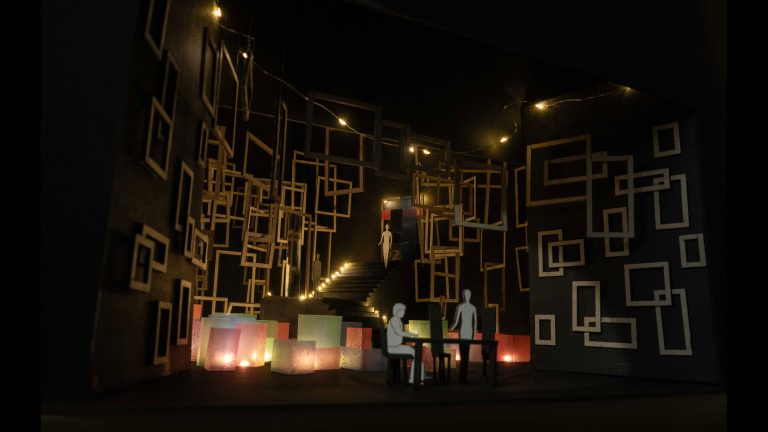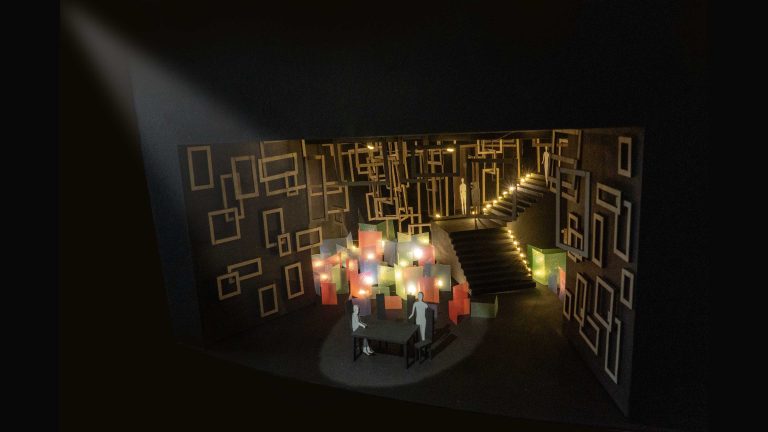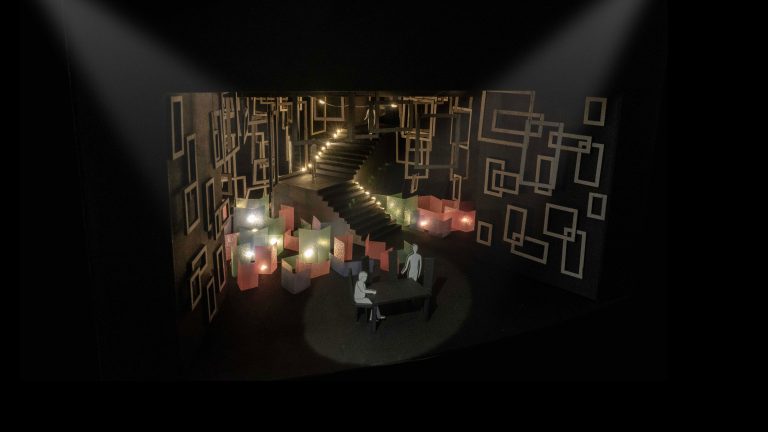Scenogarphy
Stage Design
What is the play about?
Long Day’s Journey into Night is a personal play by Eugene O’Neill that follows a day in the life of the Tyrone family. It is set in 1912 and explores themes of addiction, regret, and family problems. The play’s main focus is on Mary Tyrone’s struggle with morphine addiction, her husband James’s stinginess, and their sons Jamie and Edmund’s personal failures. As the day goes on, old problems come up again, and the family gets stuck in a cycle of blaming each other, not wanting to admit what happened, and remembering painful memories. The play is a powerful story about love, resentment, and the power of the past.

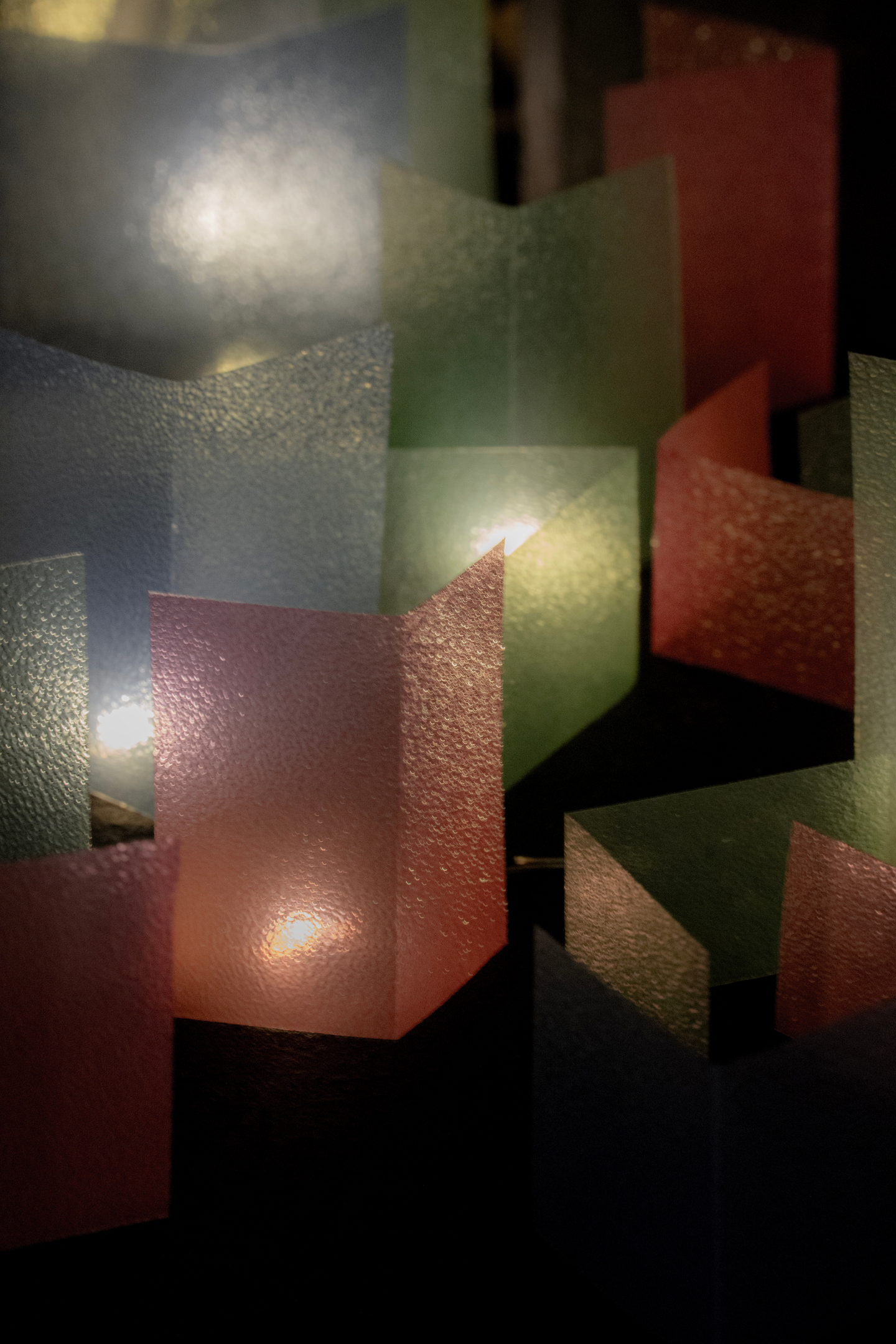
James Tyrone
The father, a once-famous actor, he is miserly sad because he did not take advantage of some opportunities
Mary Tyrone
The mother, struggling with morphine addiction and lost in nostalgia
Jamie Tyrone
The older son, a failed actor, pessimistic and self-destructive
Edmund Tyrone
The younger son, suffering from tuberculosis, sensitive and poetic
Cathleen
The family’s maid, a minor character providing brief moments of relief
What about the characters?
My stage design was inspired by the play’s central themes, memory, isolation, and the heavy feeling of the past that they can’t escape. I wanted to create a space not only a background but also reflects the emotional and psychological states of the characters.
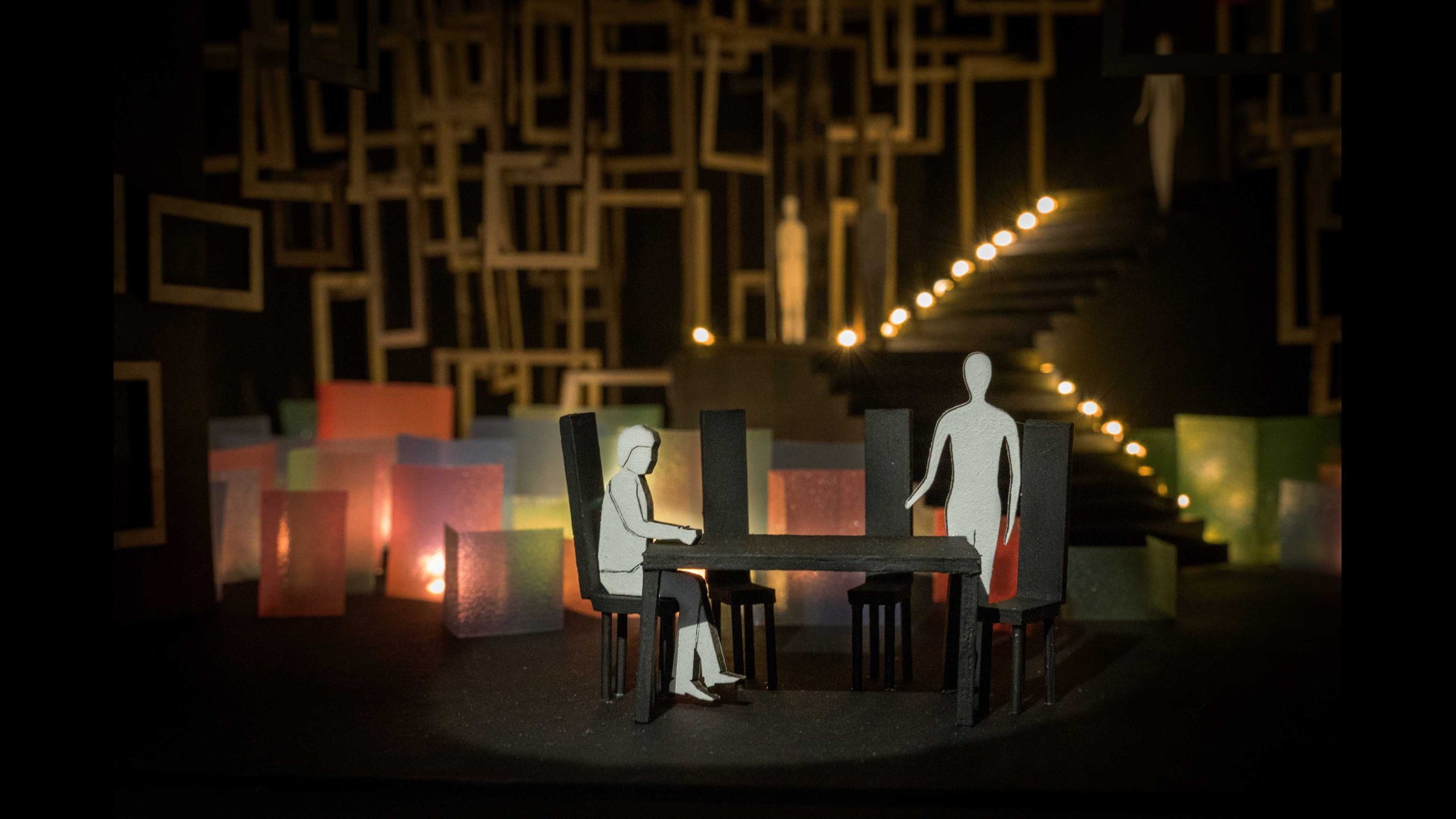
The dining table at the center of the stage is crucial because it represents the heart of the Tyrone family’s interactions. It is where they come together, yet their conversations are filled with tension, blame, and painful memories. The table stays the same, while the family members drift in and out, emphasizing their emotional distance.
The staircase leading into darkness symbolizes Mary’s retreat into the past. As she struggles with addiction, she becomes increasingly detached from reality and her family. The stairs do not lead to a visible space, which shows her mind is going somewhere no one can reach. The mirror halfway up the stairs adds to this idea—it reflects distorted images, representing how the characters struggle to see themselves clearly, avoid the truth, and deny what’s real.
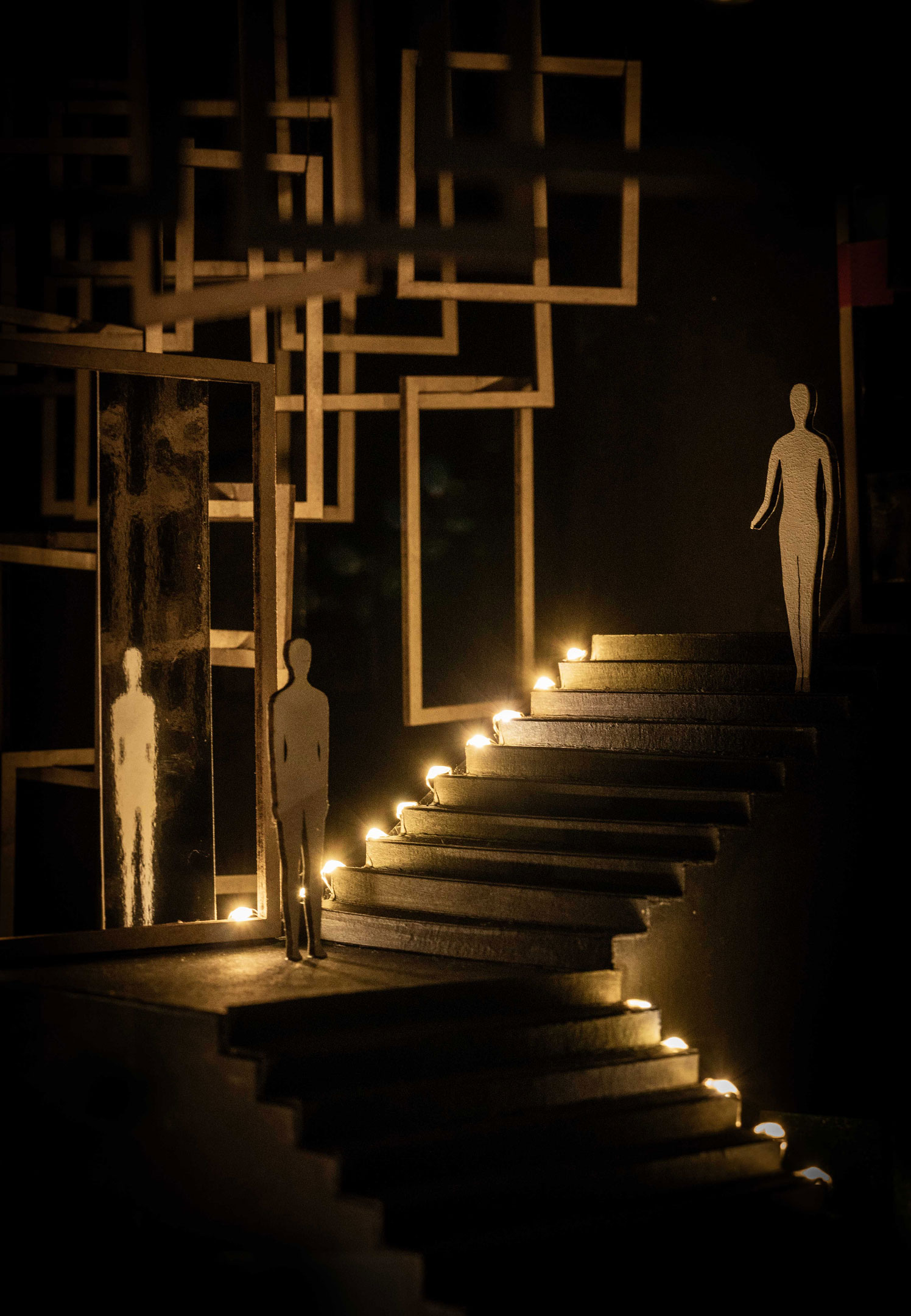
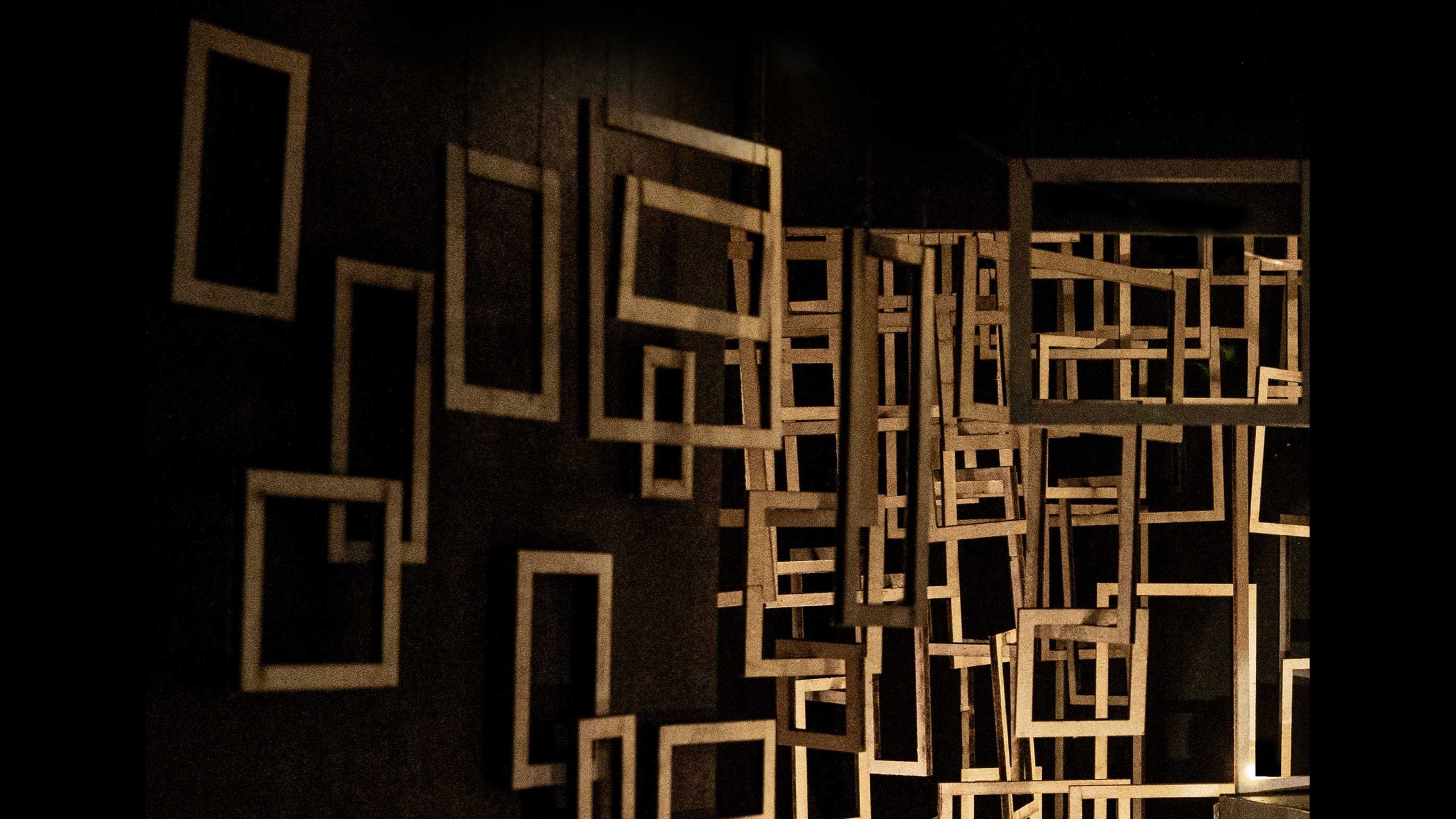
The use of empty frames is a key element of the design. They’re spread around the stage and make things feel messy and uncomfortable. They stand for broken memories and the family’s habit of living in the past. they refer to the past, and the frames are like visual reminders of their difficult history. They also show how the Tyrone family feels stuck in their own story, unable to move on.
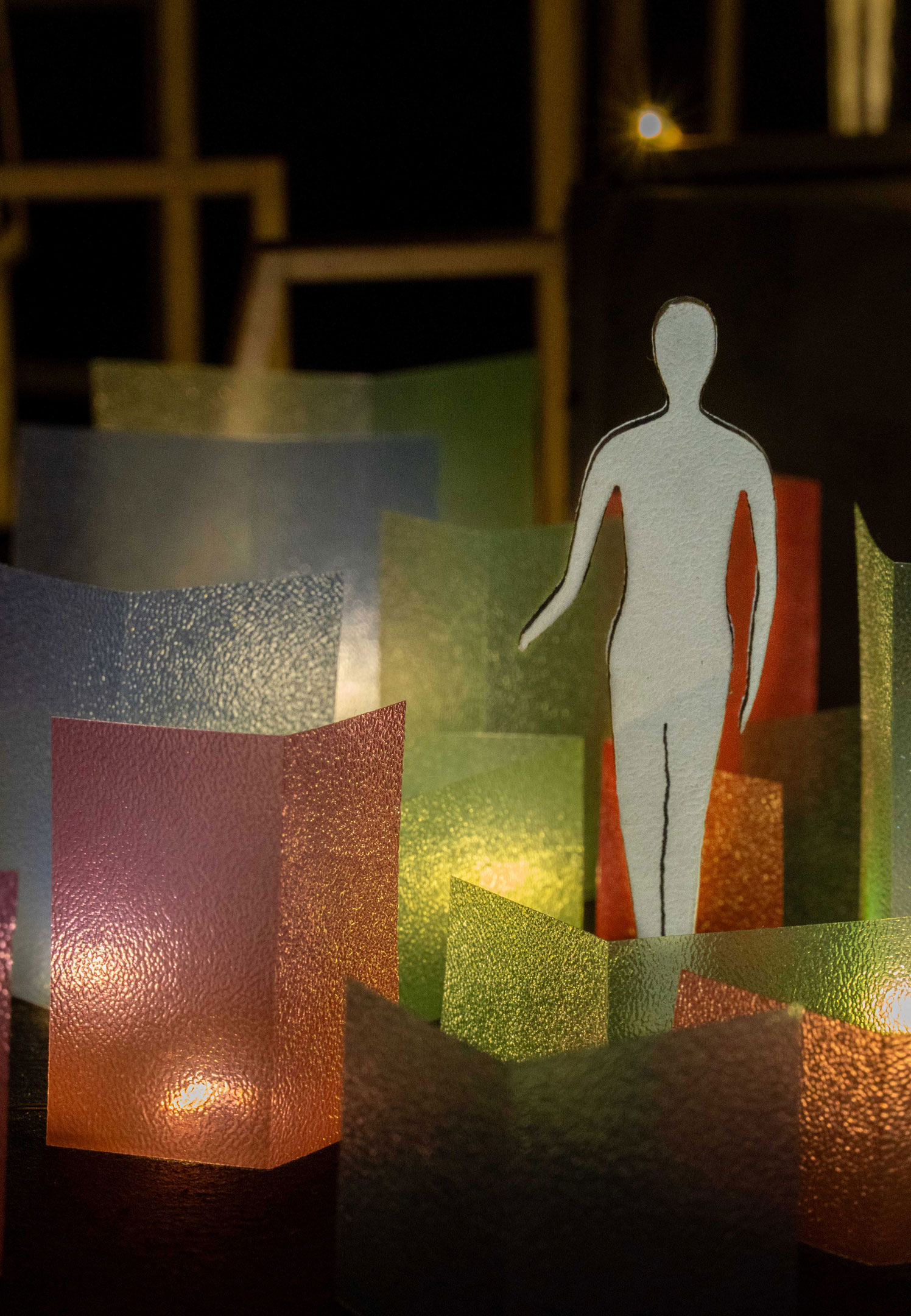
Finally, the transparent layers on the floor blur the boundary between illusion and reality. This fits the play’s dreamy vibe, where past and present blend together. The Tyrone family struggles to separate truth from self-deception, and this design choice visually represents that instability. During the performance, the actors move through these layers, showing how they move through their blurred memories from the past to the present.
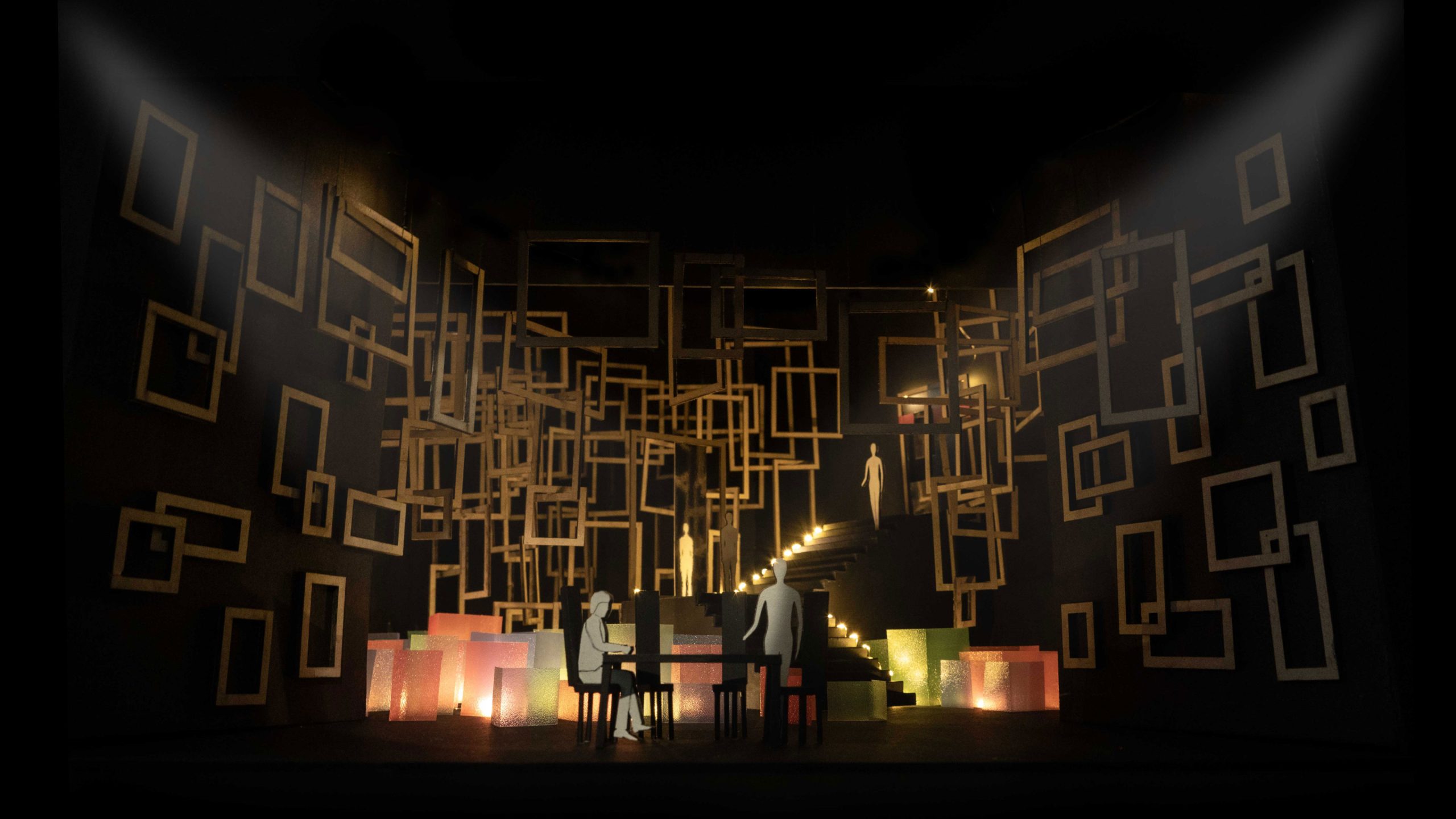
Overall, my set design aims to create an immersive environment that mirrors the emotional confusion of the play. It is not just a backdrop, but a representation of the Tyrone family’s inner world, one filled with ghosts of the past, distorted realities, and an overwhelming sense of entrapment.
